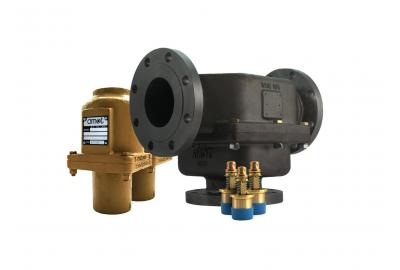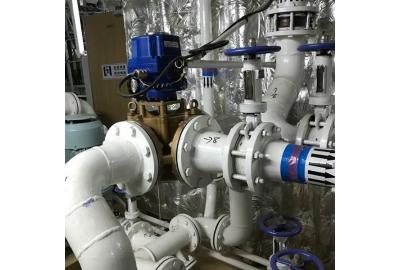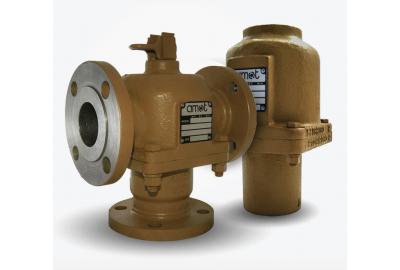AMOT has been in the business of developing the best temperature control technologies since 1948. Our earlier blog, “What is a Temperature Control Valve,” explained how these devices work, the different types of valves available, and how the valves are used in different applications. In this article, we’re going to dive a bit deeper into a specific type of temperature control valve: thermostatic mixing valves (TMVs).
A temperature control valve that is actuated by internally sensing and controlling fluid temperatures is called a thermostatic valve. This type of valve is self-contained without any external power source. AMOT pioneered this technology in 1948 when we introduced into our valve design a special wax that remains in a semi-solid form and is highly sensitive to temperature changes. As the temperature of the fluid changes, it causes the wax to expand or contract which slides the valve up or down, opening or closing ports.
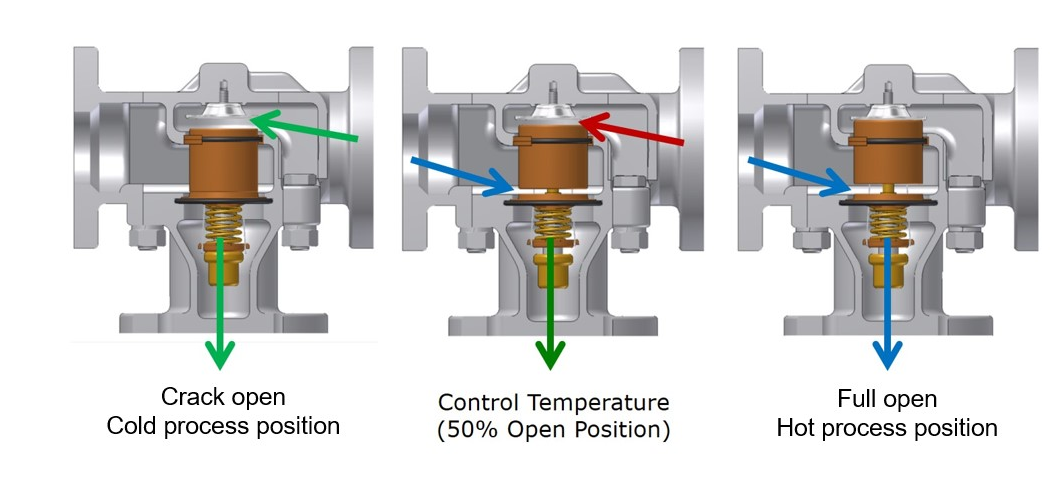
| Thermostatic control valves can be configured to perform their function in several ways, but the two most common are mixing and diverting. In a diverting application, the valve redirects the fluid to a cooler, heat exchanger, or radiator; in a mixing application, hot and cold fluids are blended to achieve the desired temperature. So, as the name suggests, a thermostatic mixing valve is a thermostatic valve configured for a mixing application. | 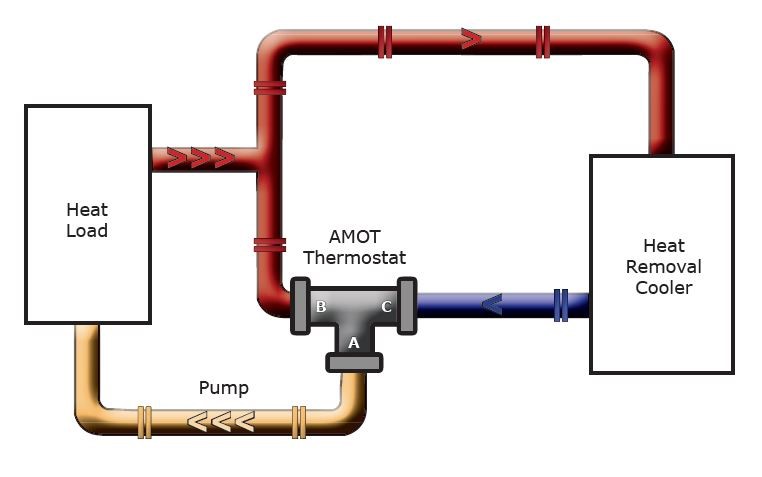 |
|
Where are TMVs used? Thermostatic mixing valves often are used in industrial, residential, or commercial applications that need to ensure a constant outlet temperature to prevent damage or injury. |
|
|
For example, in a non-condensing boiler system, if the water returned to the boiler drops below 140oF (60°C), condensation of the flue gas occurs. This, in turn, causes corrosion on the copper fins of the boiler. Conversely, if the temperature of the returned water is too hot, it can lead to thermal shock, a condition where a sudden change in temperature causes rapid and uneven expansion and contraction of the boiler’s structure. Typical boiler systems that benefit from a TMV include in-floor radiant heating, hydronic heating, heat pumps, soil heating and various manufacturing operations. |
 |
|
Tempered water systems use TMVs to protect against scalding in municipal water systems, emergency showers, eye wash stations, and care facilities like hospitals and nursing homes. Most facilities require tempered water systems that meet ANSI international safety standards. ANSI Z358.1 states that the temperature of water delivered by tempered systems should be 60-100°F (15-38°C). Temperatures over 60°F (15°C) allow for continuous flushing without causing hypothermia or shock. The upper limit of 100°F (38°C) protects against scalding and bacteria growth, a concern when water is stored at high temperatures. Maintaining control of a tempered system’s outlet water temperature can be difficult. Outlet temperature is affected by the temperature of the water provided to the system, which can fluctuate depending on its source and the location’s climate. Installing a TMV, rather than a static valve, improves the safety and comfort of the user. AMOT Thermostatic Mixing Valves AMOT has been a trusted manufacturer of 3 Way TMVs since 1948 and pioneered the wax element technology used today. These rugged, reliable valves provide a “Fit and Forget” solution where a mixing configuration is needed. Our factory pre-set elements are accurate, and our service kits contain all the components necessary to make easy work out of valve maintenance. Simple to install, operate and maintain, AMOT TMVs provide years of trouble-free, reliable temperature control without the need for external power sources. With so many sizes, body materials, and flange options, AMOT is sure to have the right valve for your application. It’s easy to select the options and request a quote right from our website. Give the filters a try on our thermostatic control valve page or contact us if you need assistance. |
|





